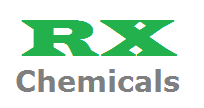
STEARIC ACID FOR SYNTHESIS
STEARIC ACID FOR SYNTHESIS
Stearic acid is a saturated monobasic acid with 18 carbon-chain lengths. It is synthesized by the hydrolysis of animal fat or from hydrogenation of cottonseed or vegetable oil. Commercial stearic acid is a mixture of stearic acid with palmitic and myristic acid.
Stearic acid is used most often to thicken and retain the shape of soaps (indirectly, through saponification of triglycerides composed of stearic acid esters), and it is also used in shampoos, shaving creams, and detergents.
Fatty acid chlorides of octanoic, decanoic, lauric, myristic, palmitic, stearic, oleic, elaidic, and linoleic acids were hydrolyzed at 25° C, in water and the amounts of unchanged acid chlorides determined after different periods of reaction.
Stearic acid is widely used in oral pharmaceutical formulations. It is mainly used in oral formulations as a tablet lubricant although it may also be used as a binder (Kibbe, 2000). Stearic acid has been used for the controlled release as a dispersion medium of drugs in the form of microspheres made of fats and waxes.




